
The Angels of Creation Commissions
The Angels of Creation Commissions are a collection of organ works composed for and premiered by Sebastian Thomson. The project's inception began with
David Bednall's Rhapsody, which was premiered at St Paul's Cathedral in 2010. All subsequent commissions – Simon Whalley's Festal Paean,
Thomas Hewitt Jones' Angels of Creation (from which the title of the project originates), Neil Cox's Laudate, and most recently, John
Hosking's 14 Stations of the Cross – have been premiered at Keble College, Oxford. Additional contemporary works by David Briggs and Philip
Moore complement this recording, which was released in 2016 by Convivium Records. The commissions have continued with pieces by Daniel Saleeb and
Francis Pott. See below for further details.
Below, you will find programme notes for the pieces Sebastian has commissioned, sample scores, a review from Organists' Review and a PowerPoint download
for the Fourteen Stations of the Cross courtesy of Sarah Foubert:
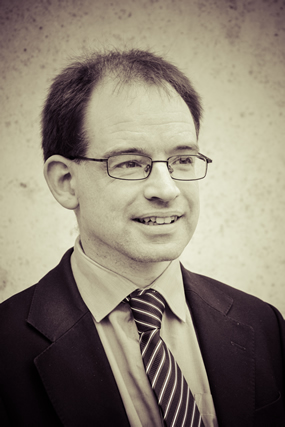
Advent Fantasy - John Hosking (2021)
The Advent Fantasy will have a virtual first performance by the composer, John Hosking in August 2021 with the hope of a number of organists taking up the challenge of
performing this after an Advent Carol Service. The improvisatory feel of the opening Veni emmanuel theme leads into the "lush" harmonies of the Advent prose. A playful
scherzo on "Helmsley" (Lo, he comes) then leads into an exhilarating toccata on "Wachet auf".
Here is a "virtual" first performance by John Hosking on the Salisbury Cathedral hauptwerk set played in a concert on 24th August 2021. If you are interested in
purchasing a score, contact the composer directly.

Bridal Fanfare - Simon Whalley (2020)
This was written for Atika and Sebastian on their wedding day in October 2020. Unfortunately, the composer was unable to be there due to Covid restrictions but his
music was present as the bride walked in. This was first performed by Ben Giddens at St Mary's Church, Henley.
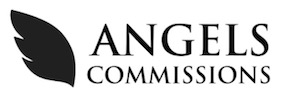
Angels of Creation competition commissions (2019)
There were 3 prizes awarded to: (1st) Michael Schultheis (Theme and Variations on Londonderry Air), (2nd) Grimoaldo Macchia (Rhapsody Celebration on "Veni Creator") and (3rd) David Loxley-Blount (Londonderry Air: Theme and Variations). All three will be recorded and further details can be found on their websites.
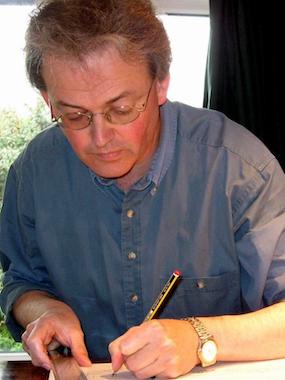
Passacaglia - Francis Pott (2018)
The impulse behind this work emerged when, having already begun to work with ideas for a Passacaglia, I found that the phrase ‘How shall we sing the
Lord’s song in a strange land?’ from Psalm 137 came unbidden into my mind – and, with it, the plight of the many thousands of homeless, dispossessed
migrants stumbling across Europe in the twenty-first century. No doubt prompted by the sombre processional feeling of the music I had already sketched,
this image shaped everything that ensued.
The Passacaglia explores conflicted territory between chromatic tonality and actual atonality. In crude terms, the less chromatic and more tonal, the
more optimistic the music eventually becomes. The ground bass – which takes some time to ‘compose itself’ and makes its first appearance some way into the
work – offers a whimsical reflection of the music’s precarious tonal-and-atonal balance, in that it is not quite a 12-tone row: instead it is a 13-tone row,
whereby the final note of the ground bass always compromises atonality by repeating something; also there are perfect intervals in the series which no strict
adherent of Arnold Schoenberg would have countenanced. A homage to the music of the Swiss composer Frank Martin (1890-1974) is embodied in a conscious nod
towards his own Passacaille (known both as an organ work and one for strings), in that the ground bass repeats itself rising by one semitone on each
reiteration – a denial of clear tonality, just as the ground bass content ‘fails’ to consolidate definite atonality.
The ground is very loosely modelled on the Lament from Purcell’s Dido and Aeneas, in the sense that it extends to a mere 5 bars, thus maintaining its
repetition against a sense of 8-bar metre in the manuals, and thereby avoiding the risk of regular and disabling cadential closure that any ground bass piece
has to confront. Just as the ground bass has 12 tones plus one added/repeated one, when it has finished repeating at every pitch it adds one further reiteration.
At this point the process is interrupted: a fugal exposition breaks out (developed out of the Passacaglia’s opening bars but also from the ground bass). The
fugue subject moves sequentially downwards, as a deliberate counterpoise to the ground bass moving gradually upwards.
The fugal material begins to metamorphose gradually back into the material of the ground bass and the ideas derived from it, until the ground reappears on
the pedals. The perfect intervals begin to proliferate and the implication is that all is now set for an eventual triumphant peroration. Because of the
superscription at the top of the score and its appropriation here as a reference to present-day refugees, this is eventually quashed in a climax which
abruptly closes the door on optimism. Gradually the musical argument unwinds and subsides, bringing about a muted reference to J.S.Bach’s chorale prelude
on Am Wasser Flüßen Babylon (BWV 653), which is woven in against the ground bass. The work now begins to imply an approaching conclusion in the
tonality of E flat – a possibility implicit in its opening bars.
The Passacaglia is integrated with a fugue motivically indivisible from the ground bass and its countersubjects. In this respect it pays obvious
and traceable homage to the model set by Bach in his C minor Passacaglia [and Fugue], BWV 582.
© Francis Pott, 2017
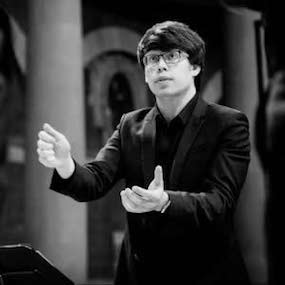
Hymn to Theotokos - Owain Park (2017)
Theotokos: (She) who gave birth to one who was God incarnate
The angel and the girl are met.
Earth was the only meeting place…
He’s come to her
From far beyond the farthest star,
Feathered through time.
From ‘The Annunciation’ by Edwin Muir
******
‘Pray tell me now this inf ant how
Shall He be generated?’
‘The Holy Ghost, of virtue most,
Shall cast his shadow o'er thee.’
From H. v. Loufenberg's ‘Geistliche Lieder’; translation by George R. Woodward
******
a fallen flare…
Wings beating about the room;
The terror of all terrors that I bore
The Heavens in my womb.
From ‘The Mother of God’ by W.B. Yeats
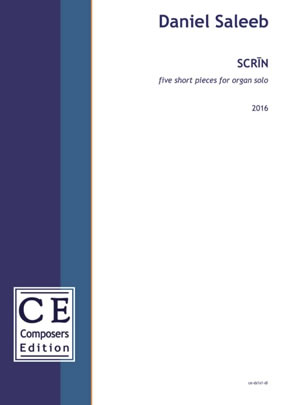
Scrīn - Daniel Saleeb (2016)
First performed at Merton College, Oxford on 10th November 2016. ‘Scrīn’ (pronounced ‘shreen’) is an Old English word of Germanic origin meaning ‘cabinet,
chest, reliquary’, and is considered etymologically connected to the modern word ‘shrine’. This collection of pieces takes as its point of departure the
imagined idea of a curio cabinet filled with consumer-available religious objects. Each of the five pieces gives a simple and personal response to the named item."
The Fourteen Stations of the Cross – John Hosking (2015)
There is nothing pleasant about the 14 Stations of the Cross; indeed one must recall suffering, torture and grief throughout. My overall aim has been to depict each station as graphically and colourfully as possible, with a constant feeling of unsettlement and not quite knowing what will come next. In this sense, even though the opening theme does appear at various points throughout the work, it has been my intention not to develop any thematic material fully. Rather, one should leave the performance in a state of shock or feeling confused – just as those close to Jesus must have not quite known what was happening or even why. In some cases, a whirlwind of different moods and senses are exploited in a very short space of time; in others, the listener is left wondering what just happened. It wasn’t even in the space of a week that the crowd were cheering Jesus and then shouting “Crucify”. I hope that some of this feeling is depicted throughout the work.
This work was inspired by the various colours the organ can produce, a Stations of the Cross that I improvised in Holy Week 2012, a walk through the Stations of the Cross at Pantasaph Monastery and some fragments of plainsong.
(i) Jesus is condemned to death
This movement begins with a forlorn motif played low down on the 16’ manual reed. A series of frantic pedal notes start to convey the horror anyone must have felt at being condemned to death. As the movement starts to get louder, the figurations in the manual part become more intense, with the final four bars intending to convey the shock and final judgement having sunk in.
(ii) Jesus is given his cross
The theme of the first movement is played on slightly gentler reed stops, accompanied by dark, deep chords which depict the nervous, yet quiet anticipation of the events soon to come. Some brief, quiet chords on an 8’ flute call to mind the dreadful grief of those close to Jesus, with the final short chords portraying the heaviness of the cross as Jesus takes his first steps.
(iii) Jesus falls for the first time
The steps of Jesus are portrayed by a repeated bass line, which towards the end become very random and jagged, depicting his stumbling footsteps. This movement contains very unexpected figurations, which signify the gruelling pain that must have been felt. When I first played this movement, I described it as a “drunken blues”; at first that may seem irreverent, but the idea was to portray something completely out of control to represent an indescribable pain that could only end in death. The final loud discords signify Jesus falling.
(iv) Jesus meets his mother
The bible tells us just how much love Jesus had for his mother, and so this movement gives a short break from the torture of this story. One assumes that the last sight of Mary was something that Jesus would have cherished – and would certainly have been the “highlight” of this dreadful walk of death. The bubbling figurations, representing Mary as a tender, loving mother, are accompanied by snippets of the Ave Maris Stella plainsong.
(v) Simon of Cyrene carries the cross
This movement was much inspired by the Stations of the Cross at Pantasaph Friary in North Wales. This particular station show Jesus low down, burdened with pain, while Simon is depicted higher up in light – almost as an angel coming to lend aid. The opening discords, coloured by the Vox Humana and Oboe depict Jesus struggling, bleeding, sweating and finding it difficult to continue. Just as one thinks this short introduction will cadence, it continues – depicting the seemingly never ending walk with the cross. Simon coming to help is played high up on the celestes – yet the help doesn’t last for long… and only briefly does it seem like a relief, with the knowledge that Jesus will soon have to take his cross back again. The opening introduction appears in diminution at the end, almost giving a flashback to the initial struggle and a quick reminder of how difficult the rest of the journey will be.
(vi) Veronica wipes the face of Jesus
To quote the Walsingham Pilgrim Manual, “A woman courageously steps out of the crowd and brings Jesus some comfort by wiping the sweat and blood from his forehead.” The rich chords played on the swell strings signify both the brief comfort felt by Jesus and the compassionate heart of the woman. The dripping blood and sweat is signified by staccato figurations played on 8’ and 2’ flute stops. Towards the end of this movement, Jesus continues his lone journey which is signified by a sustained line played on a single 8’ flute, but we are reminded of his suffering once again by more dripping of blood from his wounds.
(vii) Jesus falls for the second time
This station begins with a staggered depiction of the pedal theme used in the third movement, to demonstrate how much harder it must have been for Jesus to carry the cross at this point. There are traces of the dripping blood and sweat from the previous station, while a lone flute solo once again makes us stop to think just how alone anyone facing death by crucifixion must have felt. Even though Jesus had his friends around them, it wasn’t a situation that could be made better by any level of comfort; in effect, no matter what happened, the end result would still be the same – and only the person enduring this could really know what it felt like.
A stronger registration depicts a second wind; that moment when if you don’t push harder, it is likely that your body will give up. The footsteps theme returns to the pedal, but eventually can’t make a whole sequence; with a run of demi-semi-quavers, it’s as if all control of the body has been lost, and Jesus falls for a second time.
(viii) Jesus meets the daughters of Jerusalem
There are always different levels of grief when something bad happens to someone, and here I’ve tried to reflect this within the writing. While wanting to depict
the gentleness of the women watching the events of the day, the right hand line, played on 8’ and 4’ flutes, has a very meandering feeling to it. There are lots of
chromatic shifts to symbolise the suffering of Jesus as viewed by a bystander; the unsettled feeling created by sometimes having very conventional harmony, and
sometimes not, is intended to demonstrate a sympathy, but one that will not be as strong and consistent as that of Jesus’ own mother. Mary’s devotion and love
for her Son is reflected in strong, slow notes in the left hand played on the Cornet in the form of the “Stabat Mater” plainsong. These verses from the Stabat
Mater caught my attention, in particular:
O how sad and afflicted
was that blessed
Mother of her only-begotten Son.
Who wept and grieved
and trembled to behold
the torment of her glorious child.
What man would not weep
if he saw the Mother of Christ
in such torment?
Who could not be sorrowful
to behold the pious mother
grieving with her Son?
(ix) Jesus falls for the third time
This Station begins on the tutti, with some very energy-driven writing. This symbolises the strong, inner determination to keep going – no matter what – and trying to wipe out the feeling of pain. The scene changes to the large crowd watching Jesus walk; the steps are slow, the pattern of footsteps rather random, Jesus stumbles slightly, the crowd aren’t quite sure if he’ll make it and then, all of a sudden, he falls again.
(x) Jesus is stripped of his garments
This movement is very slow and reflective, using only three stops – an 8’ String, an 8’ Oboe and the 16’ Pedal Violone, all uncoupled. These are the thinnest, barest stops on any organ and hopefully depict a feeling of vulnerability and complete loss of dignity. The final two motifs played on the Oboe hint that the soldiers casting lots were probably having a bit of a laugh at the time too.
(xi) Jesus is nailed to the cross
This movement has very fast, manic writing for the left hand and feet throughout. This represents the malice with which Jesus was condemned to death and the lack of remorse from the crowd. In amidst this very hostile atmosphere, large staccato chord clusters are played to depict the nails being hammered in on the cross.
(xii) Jesus dies on the cross
This movement is based upon the Graduale Incipit from the Requiem Mass. It begins and ends very sparsely, building up to a gentle climax in the centre with textures gradually thickening.
(xiii) Jesus’ body is removed from the cross
In this movement I have tried to capture the scene of those close to Jesus looking on with sadness as his body is removed from the cross. It is very simple in construction and uses very basic harmonies. The slightly more chromatic moments exist to portray an increasing intensity of grief, before looking back at the scene with a more controlled sadness.
(xiv) Jesus is laid in the tomb and covered in incense
The final Station of the Cross focuses on incense; the Vox Humana with tremulant, surrounded by 8’ foundations always symbolises a great sense of mystery to me as does the smell of incense when one walks into a place of worship following its use. The key of Eb minor also feels particularly rich to me and hopefully successfully portrays the character of this scent.
(xv) Resurrection
As the Christian story doesn’t end at Good Friday, but continues with the triumph over death on Easter Day, I wanted to add an optional final movement to celebrate the resurrection of Jesus. This is based on the Victimae Paschali plainsong and takes the form of a mid to late-twentieth century French fugue. Beginning with strict counterpoint, the figurations start to become more complex, concluding with fiery repeated chords on the tutti which aren’t dissimilar to some of the improvisations of Pierre Cochereau." (John Hosking)
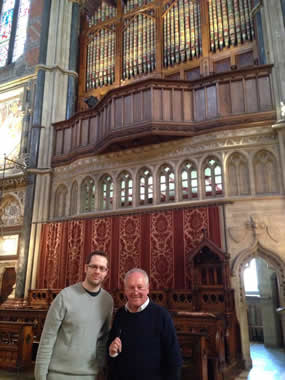
Laudate – Neil Cox (2014)
Based on the Psalm 150 window in Chichester Cathedral.
"The Marc Chagall window in Chichester Cathedral dates from 1978. A blaze of red with punctuations of blues, greens and yellows, its theme is psalm 150. It teems with
small figures, spiralling upwards in a vortex of energy and movement. Children play and dance, and creatures sound trumpets, horns, flutes, cymbals, tambourine and fiddle.
Presiding over the scene sits David with his harp and above him the tablets representing the word of God. Laudate is an evocation of Chagall’s vibrant work, an
image of joy and celebration."
"Let everything that hath breath, Praise the Lord!" (Neil Cox)
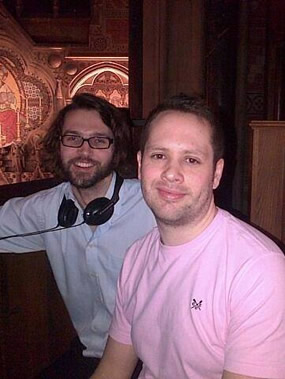
Angels of Creation – Thomas Hewitt Jones (2013)
"This work was first performed by Sebastian Thomson at Keble College, Oxford, on 21 November 2013. Reflecting on angels, both as God's messengers and also as bringers of great
joy, Angels of Creation is a jubilant organ piece, intended to create a rousing emotional experience for performer and listener alike. The overall tone of
Angels of Creation is one of extreme anticipation and excitement. The principal thematic material, based around a triplet motif, is developed, elongated and
altered over the entire course of the piece, right through to a jubilant coda. In addition, building on the idea that, while some angels remained loyal to God others rebelled,
a sense of playfulness and possible rebelliousness is introduced. This is achieved by the occasional infusion of what might be called 'lighter' touches of added-note harmony
that vary the colour and mood of the work. In the closing, euphoric coda, all the preceding thematic strands of Angels of Creation are woven together to create a
rhapsodic climax that aims to evoke an irresistible sense of optimistic resolve." (Thomas Hewitt Jones)
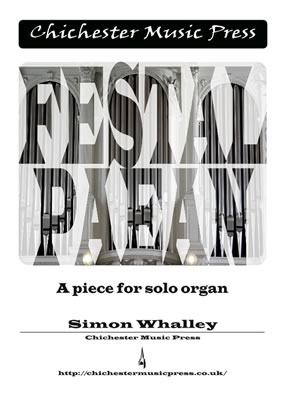
Festal Paean – Simon Whalley (2012)
"The Festal Paean was written for and commissioned by Sebastian Thomson as a celebratory piece to demonstrate the huge variety of colouristic effects that the Keble
organ has to offer. It is a loose rondo in form, starting with a fanfare of musical ideas in dialogue that eventually arrive at the main rondo theme. Episodes of contrasting
material include a chorale, based on the commercium hymn 'Gaudeamus igitur', and a rhythmically jagged section to be heard on the bizarre effect of the vox humana stop combined
with mutations. At the conclusion of the piece the different material is all combined whilst the pedals play the chorale theme." (Simon Whalley)
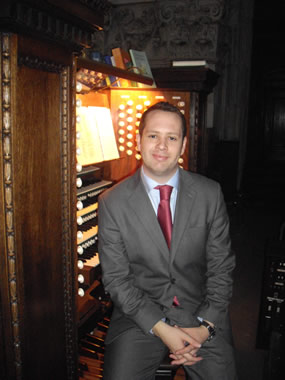
Rhapsody – David Bednall (2010)
"Rhapsody was commissioned by the dedicatee, Sebastian Thomson, and received its World Premiere at St Paul’s Cathedral, London. A dramatic opening introduces the
conflict between the chords of B flat and E. These two keys, separated by the extreme musical interval of a tritone, will be important throughout the work. This introduction
is followed by the main thematic material, marked ‘turbulently’. The climax is reached and from the echo emerges a second, contrasting theme. A return of the opening material
follows with a reprise of the central theme, this time on full organ. The harmonic language becomes denser and its culmination is followed by a huge diminuendo.
The closing bars are dramatic and leave the conflict between the two tonal centres unresolved.” (David Bednall)

 Read the Editor's
Choice CD review featured in the popular publication - Organists' Review (September 2017)
Read the Editor's
Choice CD review featured in the popular publication - Organists' Review (September 2017) View a sample of the Bridal Fanfare score
View a sample of the Bridal Fanfare score Purchase a copy of the Scrīn score
Purchase a copy of the Scrīn score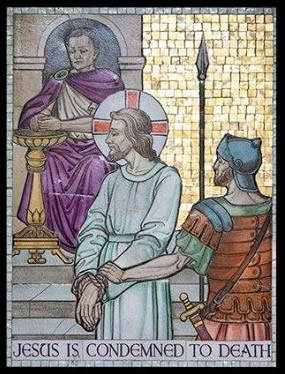
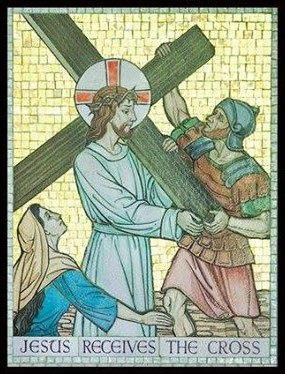
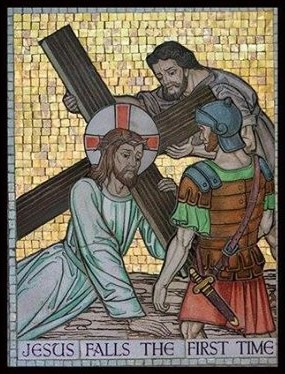
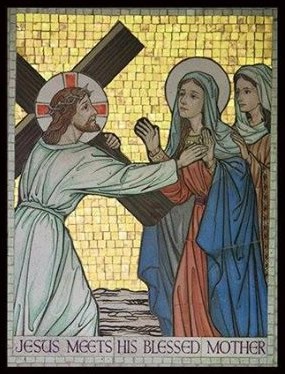
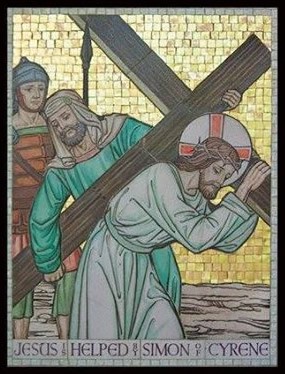
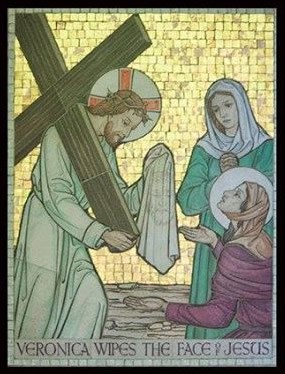
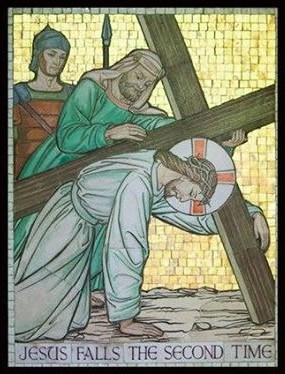
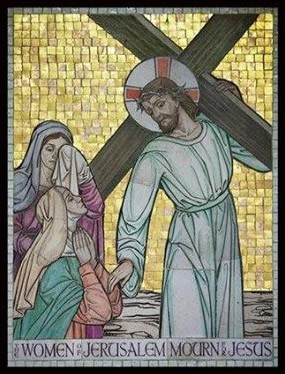
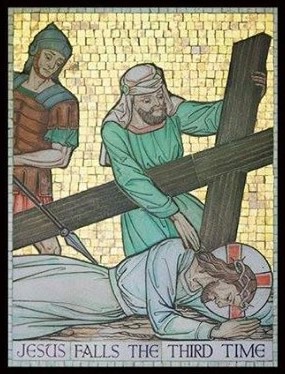
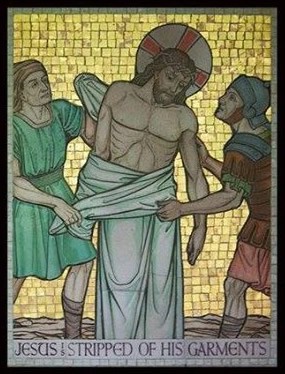
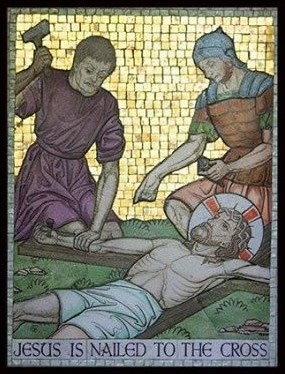
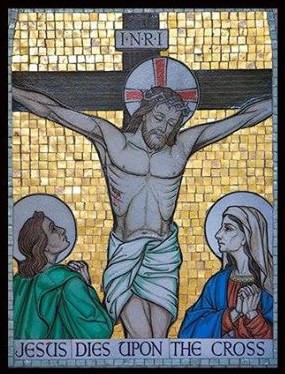
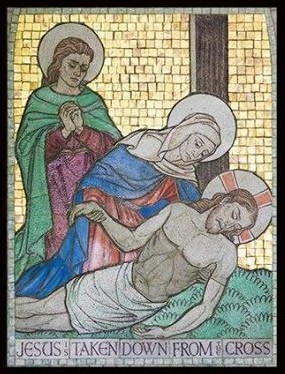
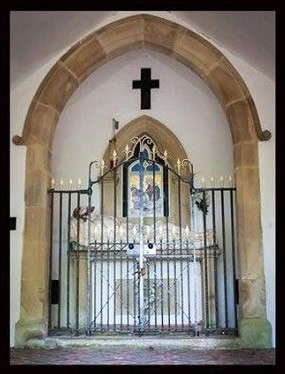
 Download The Fourteen Stations of
the Cross PowerPoint slide show (8.3 MB)
Download The Fourteen Stations of
the Cross PowerPoint slide show (8.3 MB)




